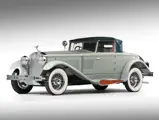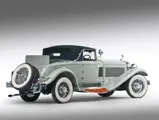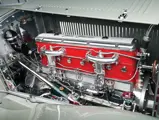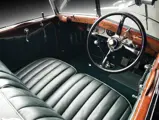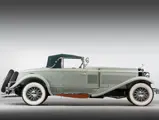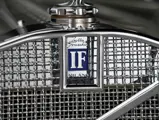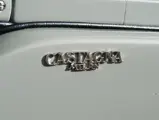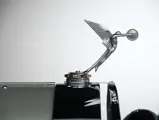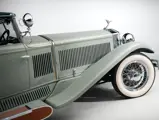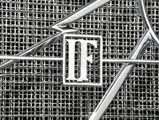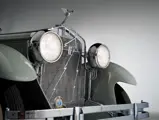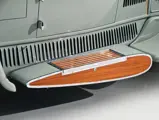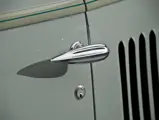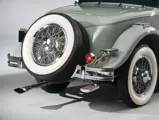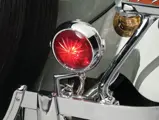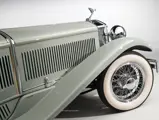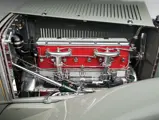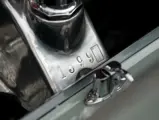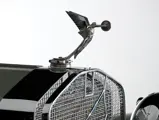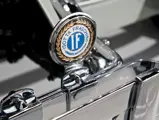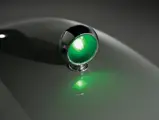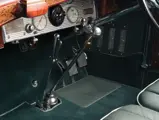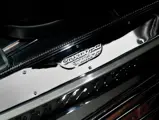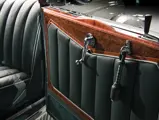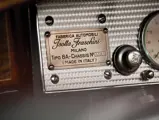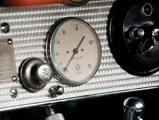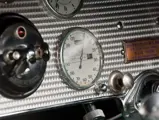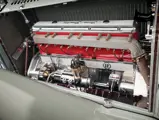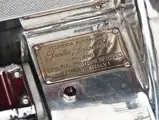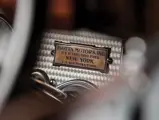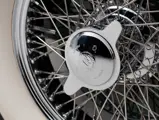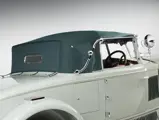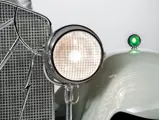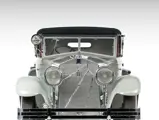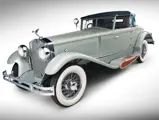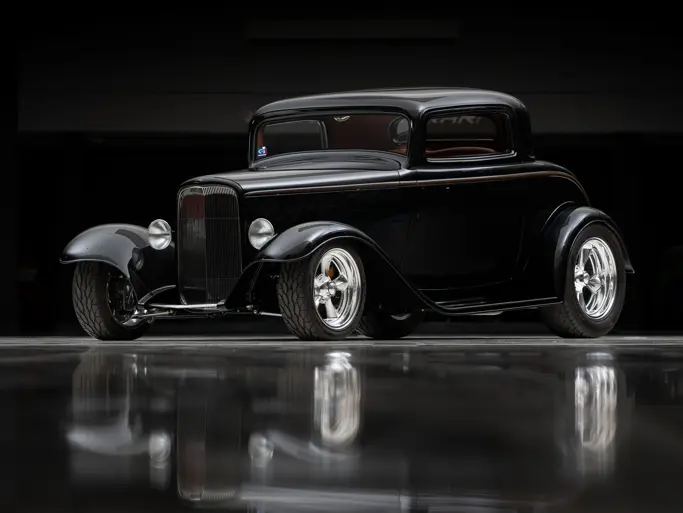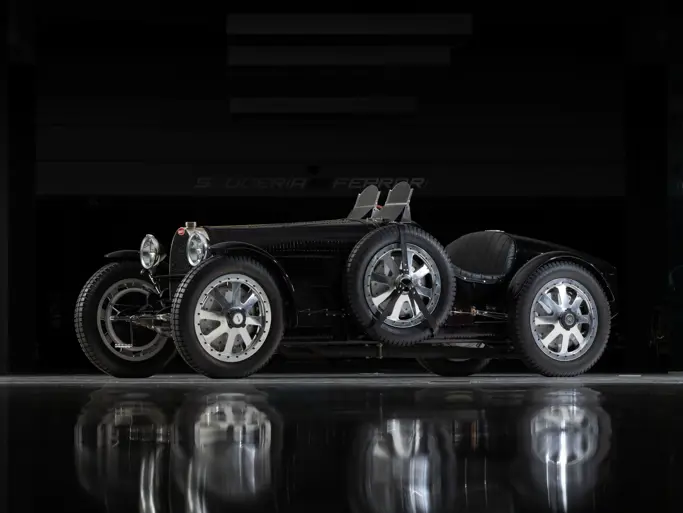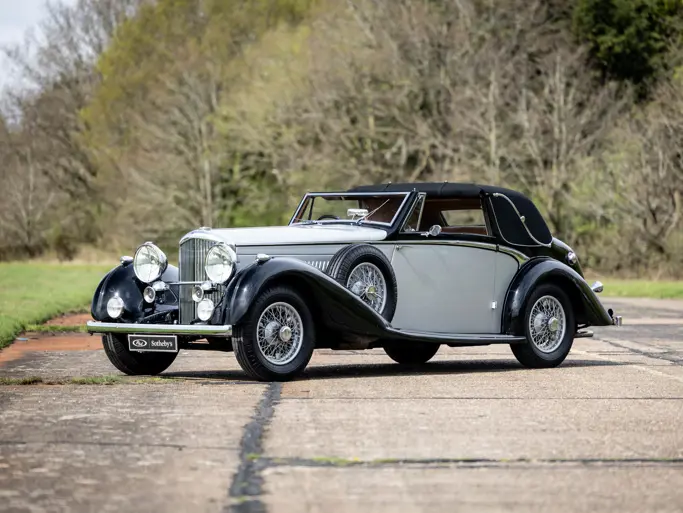Monterey 2012
1930 Isotta Fraschini Tipo 8AS Boattail Cabriolet by Carrozzeria Castagna
{{lr.item.text}}
$1,750,000 - $2,500,000 USD | Not Sold
 | Monterey, California
| Monterey, California
{{internetCurrentBid}}
{{internetTimeLeft}}

120 bhp, 7,370 cc L-head eight, three-speed manual transmission, solid front axle with semi-floating rear axle and semi-elliptic leaf springs front and rear, and four-wheel Dewandre vacuum servo-assisted mechanical drum brakes. Wheelbase: 146"
• Pebble Beach Second in Class winner
• Ex-Sergio Franchi Collection
• Recent concours quality restoration
The Eight-Cylinder Isotta-Fraschini
Società Milanese Automobili Isotta, Fraschini & C. was founded on January 27, 1900. The firm was focused on the assembly of Renaults before advancing to production of its own namesake automobile. Early production focused on high horsepower cars: veritable fire-breathers that achieved celebrity in the crucible of racing. Of early note is Isotta’s victory in the 1908 Targa Florio. In 1919, the firm established itself as a luxury manufacturer with the introduction of the Tipo, or Type 8, which became the first production car to feature a straight-eight engine. The successor to the 5.9-Liter Tipo 8 was the 8A, which had a 7.3-liter straight-eight that put out a respectful 80 horsepower.
The next step in the development of the larger eight liter was the 120 horsepower Tipo 8AS, with the ‘S’ denoting a tuned engine. The true answer to understanding the 8AS is slightly more involved. According to Angelo Tito Anselmi’s groundbreaking reference on the marque, “Until the spring of 1927, the Spinto or tuned versions of the 8 and 8A were made sporadically and resulted from a combination, optional to a certain degree, of three ingredients: short wheelbase chassis, engine with high compression ratio, and a somewhat high numerical final-drive ratio. The fourth ingredient was lightweight coachwork, which Isotta-Fraschini advised but which was left to the client’s taste.” Chassis length on the 8AS was also negotiable, and many clients preferred the longer 146-inch wheelbase, which allowed for better body lines.
Amici Milanese
Like other luxury marques, the Isotta-Fraschini was offered as a rolling chassis that would be sent off to be clothed with coachwork produced by the finest craftsmen of the day. The length of the massive 8A engine lent itself to a long hood and cowl that became signatures for the model. Carrozzeria Castagna gained serious traction after it began producing automobile bodies in the early-1900s and soon, bodies by Castagna were frequently finding their way onto the most exclusive chassis of the day, including the Alfa Romeo 8C, Mercedes-Benz, and of course, Isotta-Fraschini. The relationship between the two was so successful that it could be said that Castagna was to Isotta-Fraschini what Murphy was to Duesenberg. There were a number of other Italian coachbuilders who collectively provided the majority of the bodies for the various eight-cylinder Isotta chassis, but few are considered more exceptional than the drophead Castagnas.
Chassis 1581: “The Grey Goddess”
Chassis 1581 was acquired sometime in the late-1970s or early 1980s, by world renowned actor and opera tenor Sergio Franchi. A photo of Franchi with the fully intact 8AS Castagna Cabriolet appears as if it had just been woken from a long slumber. By 1983, the car was restored and displayed at Pebble Beach and remained identified with Franchi until being acquired by the current connoisseur nearly two decades later.
Given that the restoration was a quarter century old, the new owner commissioned Byron Libbey, of Libbey Restorations in Shrewsbury, Massachusetts, to enable the car to return to Pebble Beach. The car was running and driving well prior to disassembly, and a set of photographs that document the restoration will be supplied with the car. The chassis, suspension, and undercarriage shield are finished in a deep, even black, which was given as much attention as the exterior sheet metal of any outstanding concours restoration. The engine was lightly torn down, found to be in excellent working order, and cosmetically furnished to proper surface finishes, including the abundance of polished aluminum, as it originally appeared, and the lengthy painted red 7.3-liter block. The steering box, transmission, and rear end were fully rebuilt, and the only modification made was to use a close gear ratio in the steering box, which improved handling.
The coachwork is entirely original and constructed of aluminum, with the sheer size of the fully assembled body and its individual panels belied by exceptional proportioning of its entire sculpted length. The solidity of the body is especially impressive, due to the metal choice, and demonstrates the inherent Italian ability to incorporate sound structural support into some of the most voluptuous forms. Finished in a green-grey similar to the livery it previously wore, a lighter green belt molding is accented by a delicate forest green pinstripe that runs down its length. The long flowing front fenders make an impressively crafted turn so they may conform to and append to the side of the chassis rail and continue rearward. Adoring the front passenger-side fender is a single parking light with a green cut glass lens on the front and a red jewel on the rear, which is mimicked by the cut red glass of the taillight.
Next are dual teardrop-shaped step plates, which double as toolboxes and are accessed via the varnished wood lid, which is adorned with chrome ribs. The teardrop-shaped profiles are also finished with varnished wood and followed by the rear arches, which arc up and over the rear wheels. Mounted on the driver’s side are the three wooden rumble seat step plates trimmed with chrome ribs and framing.
The body continues to the rumble seat lid, which is opened via an internal handle. The absence of exterior hardware minimizes distraction when the lid is lowered, as does the lack of handles on the dual golf bag doors. Following the rear compartment is the boattail, punctuated by two rear-mounted wire spares. Close inspection of the wheel knockoffs shows that they are inscribed with Isotta’s intricate logo, as well as the words sinistro and destroy, to denote the threads as being left- or right-handed. Even the license plate is lit by a lamp of the same quality of that used on the interior, and an artistic chromed exhaust tip fans out three dimensionally in a diamond shape.
All of the chrome on the exterior was re-plated, including the six wire wheels, period accessory Stephen Grebel headlights with stone guards, the Grebel spotlight, bumpers, and the distinctive radiator stone guard, which has an artistic representation of the sun’s rays depicting them as electric lightning bolts with arrow tips on the ends of the rays. The many other excellently plated elements include the window and windshield frames, the Bosch wiper motor, handles, knobs, and other minor fitments and fixtures down to the frame of the Isotta-Fraschini Owner’s Association badge adorning the front bumper.
The exterior of the dark green cloth convertible top is fresh and clean, while its grey upholstered headliner is taught and unblemished. The interior of the very sound convertible top is accented by two oval courtesy lights, which have frosted, etched glass covers. Other features include dual locking glove boxes and intricate wooden inlay, which utilized multiple types of wood and features an artistic usage of grained and burled wood, which is matched by the finish and materials used in the rumble seat, down to the dual locking glove boxes. Highlighting the interior is the engine turned dash, which is fitted with fine instrumentation illuminated by dual lights, and the split windshield frames, which can be folded out for better ventilation. The quality of accoutrement also applies to the delicate dual glass ashtrays with wooden covers and the solid multiple inlay work around the door panel upholstery, which utilizes dark green leather piped with green-grey. Even the tubular door pulls are of quality, made of two-tone interwoven leather strips.
A single front bench seat is actually two independent seats that can be individually adjusted on tracks; behind the driver’s seat is a crank that will adjust the seat back to fine tune the comfort for a driver of most any size. A piano-hinged chrome strip lays on top of the doors when the windows are lowered and glides up when it is raised. This feature completes the crisp look created when the top is down, and the B-pillars have been removed and stowed in the rear compartment. Sitting behind the wheel, one is reminded of the power of the Isotta-Fraschini brand. The whole car is European in every sense of style and presentation, yet in the middle of the steering wheel are the labels that mark the spark and throttle control levers, which are printed in both Italian and English. A dash plaque also indicates that this car was delivered through Isotta Motors Inc. in New York City. Both features remind the viewer that nearly 30% of new cars produced by the Milanese firm were delivered new to the motoring elite in the United States.
Libbey’s three decades of restoration experience paid off with a Second in Class at Pebble Beach in 2009, as well as Best of Show at the Newport Concours d’Elegance. Accompanying this desirable Isotta-Fraschini 8AS are photographs depicting the car prior to and during restoration. The coachwork adorning chassis 1581 is of exceptional beauty and quality of presentation, from its entire overall balance down to the smallest orders of magnitude. Its ‘spinto’ tuned, 120 horsepower 7.3-liter eight, coupled with the other desirable elements that define the 8AS, including the lightweight, open aluminum boattail coachwork by Carrozzeria Castagna, are representative of the pinnacle of Classic Era European styling elegance.

